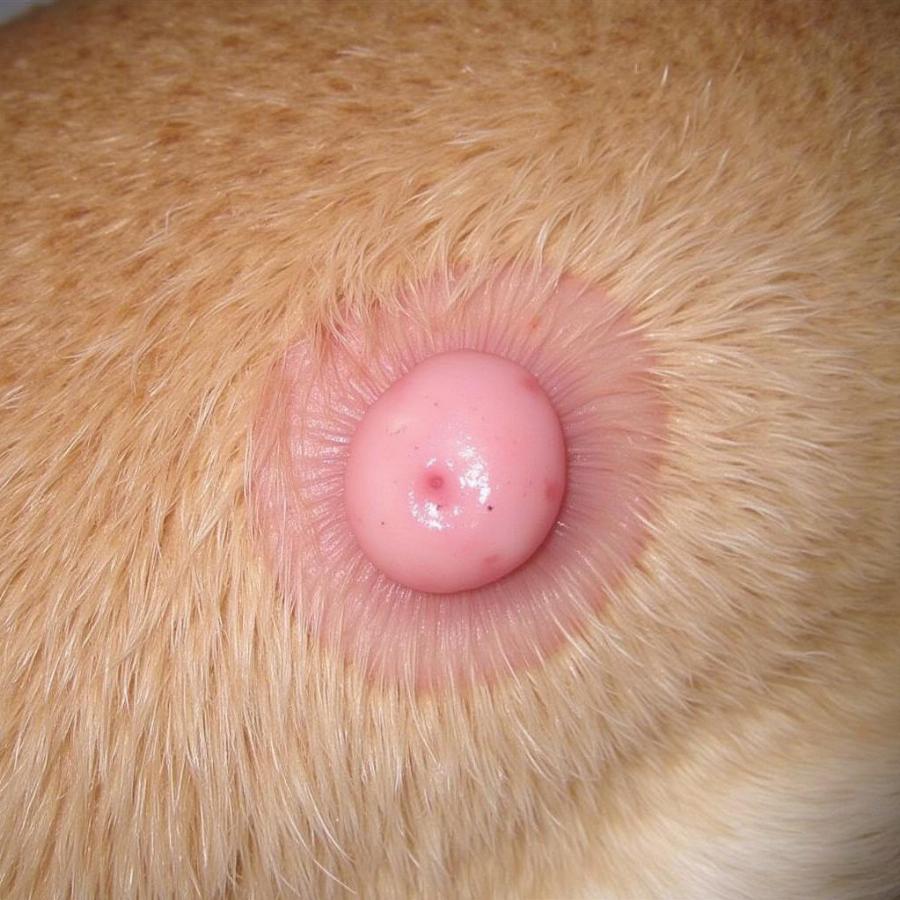Follicular cysts in dogs, also known as epidermal inclusion cysts or sebaceous cysts, are relatively common skin issues. These small, raised bumps are usually benign and filled with a cheesy or oily material. While they are often harmless, understanding their causes, symptoms, and treatment options is important for any dog owner.  Nang lông ở chó
Nang lông ở chó
What are Follicular Cysts in Dogs?
Follicular cysts develop when a hair follicle, the small cavity from which hair grows, becomes blocked. This blockage traps sebum, an oily substance produced by the sebaceous glands, leading to the formation of a cyst. These cysts can appear anywhere on a dog’s body but are more frequently found on the head, neck, trunk, and legs. While generally not painful, larger cysts or those that become infected can cause discomfort.
Causes of Follicular Cysts in Dogs
Several factors can contribute to the development of follicular cysts in dogs. These include genetics, hormonal imbalances, skin trauma, and bacterial infections. Some breeds, such as Schnauzers and Cocker Spaniels, are more prone to developing these cysts.
Symptoms of Follicular Cysts in Dogs
Follicular cysts typically appear as small, raised bumps on the skin. They can range in size from a few millimeters to several centimeters in diameter. The cysts are usually filled with a thick, cheesy or oily substance. In some cases, they can become inflamed or infected, resulting in redness, swelling, and pain.
Diagnosing Follicular Cysts in Dogs
A veterinarian can usually diagnose follicular cysts based on their appearance. In some cases, a fine-needle aspiration, where a small needle is inserted into the cyst to collect a sample of the fluid inside, may be performed to confirm the diagnosis and rule out other skin conditions.
Treatment Options for Follicular Cysts in Dogs
Treatment for follicular cysts depends on the size and severity of the cysts. Small, solitary cysts often require no treatment and may resolve on their own. Larger cysts or those that are causing discomfort may require surgical removal. In cases of infection, antibiotics may be prescribed. dog paw cyst
Home Care for Dogs with Follicular Cysts
While veterinary care is essential for larger or infected cysts, there are some things you can do at home to help manage follicular cysts in your dog. Avoid squeezing or picking at the cysts, as this can lead to infection. Keeping your dog’s skin clean and dry can also help prevent cyst formation.
When to Seek Veterinary Care
While most follicular cysts are benign, it’s essential to seek veterinary care if you notice any changes in the cyst’s appearance, such as rapid growth, redness, swelling, or discharge. These could be signs of infection or a more serious underlying condition. dentigerous cyst dog
Can Follicular Cysts be Prevented?
While not all follicular cysts can be prevented, maintaining good skin hygiene for your dog can help reduce their occurrence. Regular grooming, including brushing and bathing, can help remove excess oil and debris that can contribute to blocked follicles.
Expert Insights
Dr. Emily Carter, a veterinary dermatologist, advises, “Regular skin checks are crucial for early detection and management of follicular cysts, especially in breeds prone to this condition.”
Dr. John Davis, a veterinary surgeon, adds, “While most follicular cysts are benign, surgical removal is a safe and effective option for larger or problematic cysts.”
Conclusion
Follicular cysts are a common skin issue in dogs that can often be managed with minimal intervention. However, understanding the causes, symptoms, and treatment options is essential for ensuring your furry friend’s comfort and well-being. If you have any concerns about follicular cysts or other skin conditions affecting your dog, consulting a veterinarian is always the best course of action.
FAQ
- Are follicular cysts painful for dogs? Usually not, but larger or infected cysts can cause discomfort.
- Can I squeeze a follicular cyst on my dog? No, squeezing can lead to infection.
- Are certain dog breeds more prone to follicular cysts? Yes, breeds like Schnauzers and Cocker Spaniels are more susceptible.
- Will a follicular cyst go away on its own? Small cysts often resolve spontaneously, but larger ones may require treatment.
- What does a follicular cyst look like? It typically appears as a small, raised bump on the skin, filled with a cheesy or oily material.
- What is the best treatment for follicular cysts in dogs? Treatment depends on the size and severity; options include monitoring, surgical removal, or antibiotics if infected.
- How can I prevent follicular cysts in my dog? Maintaining good skin hygiene through regular grooming can help reduce their occurrence.
Beaut Dogs is your trusted resource for all things dog-related, providing expert advice and information on dog breeds, care, health, and more. For personalized guidance and answers to your specific questions, contact us at [email protected]. We are here to help you navigate the world of dog ownership and ensure your canine companion thrives. Visit Beaut Dogs today!